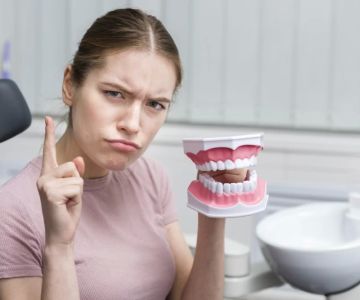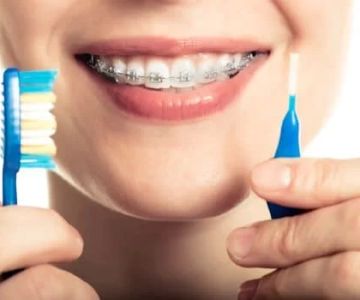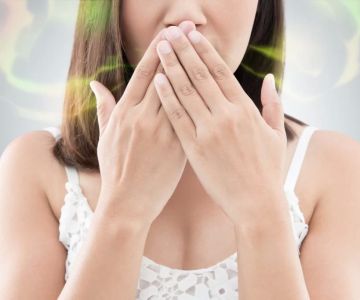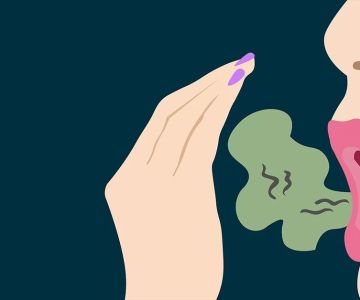How to Know If You Have Good Oral Hygiene
Having good oral hygiene is essential for your overall health. It’s not just about keeping your teeth white, but also preventing serious dental issues like cavities, gum disease, and bad breath. But how do you know if you're doing enough to maintain proper oral hygiene? In this article, we’ll dive into the signs of good oral hygiene, the best practices for maintaining it, and how to tell if your current habits are working for you.
1. Signs of Healthy Teeth and Gums
One of the easiest ways to determine if you have good oral hygiene is by examining the health of your teeth and gums. Healthy teeth should be clean, white, and free of plaque buildup. They should not be sensitive or prone to pain. Similarly, your gums should appear pink, firm, and not bleed when brushing or flossing.
Here are a few signs that indicate good oral hygiene:
- No bad breath: While it’s normal to have occasional bad breath, persistent bad breath (also known as halitosis) could indicate poor oral hygiene or gum disease.
- Healthy gums: If your gums are pink and firm without swelling or bleeding, this is a good sign that you’re maintaining proper oral hygiene.
- No plaque buildup: Plaque is a sticky, colorless film of bacteria that forms on your teeth. It’s normal to have a small amount, but too much can lead to cavities and gum disease. You should be able to remove it easily by brushing and flossing regularly.
- Strong, smooth teeth: Your teeth should feel smooth to the touch and not have visible holes or softness.
2. The Importance of Brushing and Flossing
Brushing and flossing are the two most important practices to ensure good oral hygiene. Brushing removes food particles and plaque from the surface of your teeth, while flossing gets rid of debris between your teeth and along the gumline.
The American Dental Association recommends brushing your teeth twice a day for at least two minutes with fluoride toothpaste. Flossing should be done at least once a day to remove plaque and food particles that your toothbrush cannot reach. If you’re unsure whether you’re brushing correctly, consider asking your dentist for a demonstration.
3. Regular Dental Visits
Even with excellent at-home care, regular visits to the dentist are essential for maintaining good oral hygiene. Your dentist can spot issues that you might not notice, such as early signs of cavities, gum disease, or oral cancer.
Routine checkups also allow your dentist to clean areas that are hard to reach with a toothbrush, ensuring your mouth stays fresh and healthy. Most people should visit the dentist every six months, though some may need to go more often depending on their oral health.
4. The Role of Diet in Oral Health
Your diet plays a significant role in the condition of your teeth and gums. Consuming sugary and acidic foods can contribute to tooth decay and enamel erosion. On the other hand, foods like leafy greens, dairy products, and nuts can help strengthen teeth and gums.
Drinking plenty of water also helps wash away food particles and bacteria, preventing plaque buildup and keeping your mouth hydrated. If you drink coffee, tea, or soda, be sure to brush your teeth afterward to avoid staining.
5. How to Tell If You’re Maintaining Good Oral Hygiene
Now that you know the basics, it’s time to assess your habits. Here are some simple ways to evaluate if you’re maintaining good oral hygiene:
- Check for clean teeth: After brushing, your teeth should feel smooth and free from any rough patches. If they still feel gritty or sticky, you may not be brushing thoroughly enough.
- Gum health: Pay attention to your gums. If they’re red, swollen, or bleed during brushing, it could be a sign of gingivitis (early gum disease). This can be prevented with good oral hygiene practices.
- Check for bad breath: If your breath consistently smells bad despite brushing and flossing, you may need to re-evaluate your routine. It could indicate an issue with your gums or teeth that requires a dentist’s attention.
- Monitor your dental checkups: If your dentist finds little to no plaque or signs of cavities, that’s a great indicator that you’re doing a good job with your oral hygiene.
6. Oral Hygiene Myths You Should Avoid
There are many myths about oral hygiene that can lead people astray. Here are a few to watch out for:
- Brushing harder = cleaner teeth: Brushing too hard can damage your gums and enamel. Use a soft-bristled toothbrush and gentle pressure.
- Flossing doesn’t matter: Flossing is essential for removing plaque between your teeth and along the gumline. Skipping this step can lead to cavities and gum disease.
- Whitening products are always safe: Overuse of teeth-whitening products can lead to sensitivity and enamel erosion. Always follow the instructions and consult with your dentist before using any whitening products.
7. Conclusion: Maintaining a Bright Smile
Good oral hygiene is essential for maintaining a bright, healthy smile and preventing dental issues. By regularly brushing, flossing, visiting the dentist, and eating a balanced diet, you can ensure your teeth and gums remain in great shape. If you’re unsure about your oral hygiene routine, don’t hesitate to reach out to your dentist for personalized advice and recommendations.
Remember, a small amount of effort each day can make a huge difference in the long run. Whether you're already practicing good habits or need to make some adjustments, taking care of your oral health will help you maintain a confident, beautiful smile.
For the best dental care products and services, visit Chinese Food to explore our recommended services tailored to your needs!







 Westgate Dental Arts
Westgate Dental Arts Coventry Family Dental
Coventry Family Dental Familia Dental
Familia Dental Dr. Daniel S. Fife, DDS
Dr. Daniel S. Fife, DDS Dentistry At Suburban Square: Michael I. Wollock, DMD
Dentistry At Suburban Square: Michael I. Wollock, DMD Comfort Care Dental
Comfort Care Dental The Importance of Oral Health Education During Pregnancy for a Healthy Pregnancy
The Importance of Oral Health Education During Pregnancy for a Healthy Pregnancy Why Skipping Dental Checkups Can Lead to Bigger Oral Health Problems
Why Skipping Dental Checkups Can Lead to Bigger Oral Health Problems Best Tips for Brushing Your Teeth Properly for Healthy Gums: Essential Techniques for Oral Health
Best Tips for Brushing Your Teeth Properly for Healthy Gums: Essential Techniques for Oral Health Advantages of Porcelain Dental Restorations
Advantages of Porcelain Dental Restorations How Can Diabetes Cause Tooth and Gum Problems? Preventing and Managing Oral Health Issues
How Can Diabetes Cause Tooth and Gum Problems? Preventing and Managing Oral Health Issues Healthy Habits for Promoting Good Oral Health and Hygiene: Tips for a Healthy Smile
Healthy Habits for Promoting Good Oral Health and Hygiene: Tips for a Healthy Smile